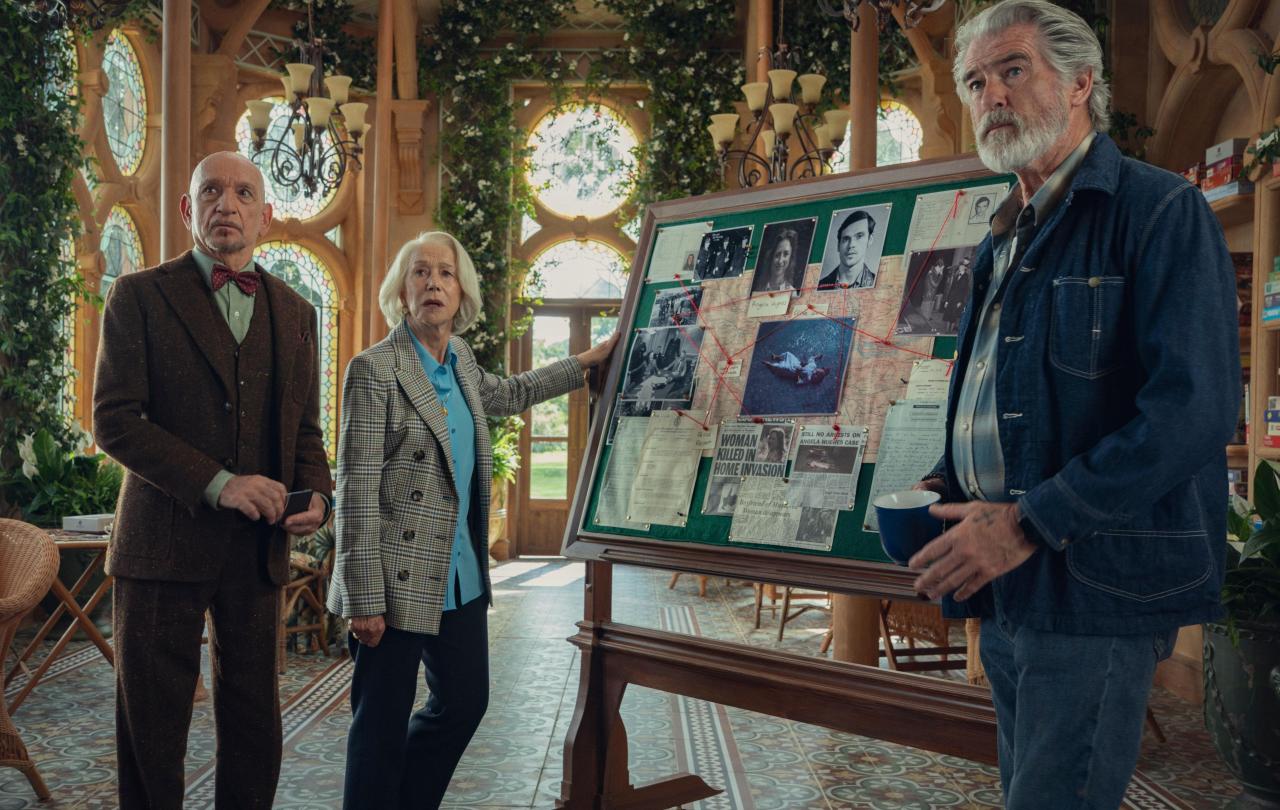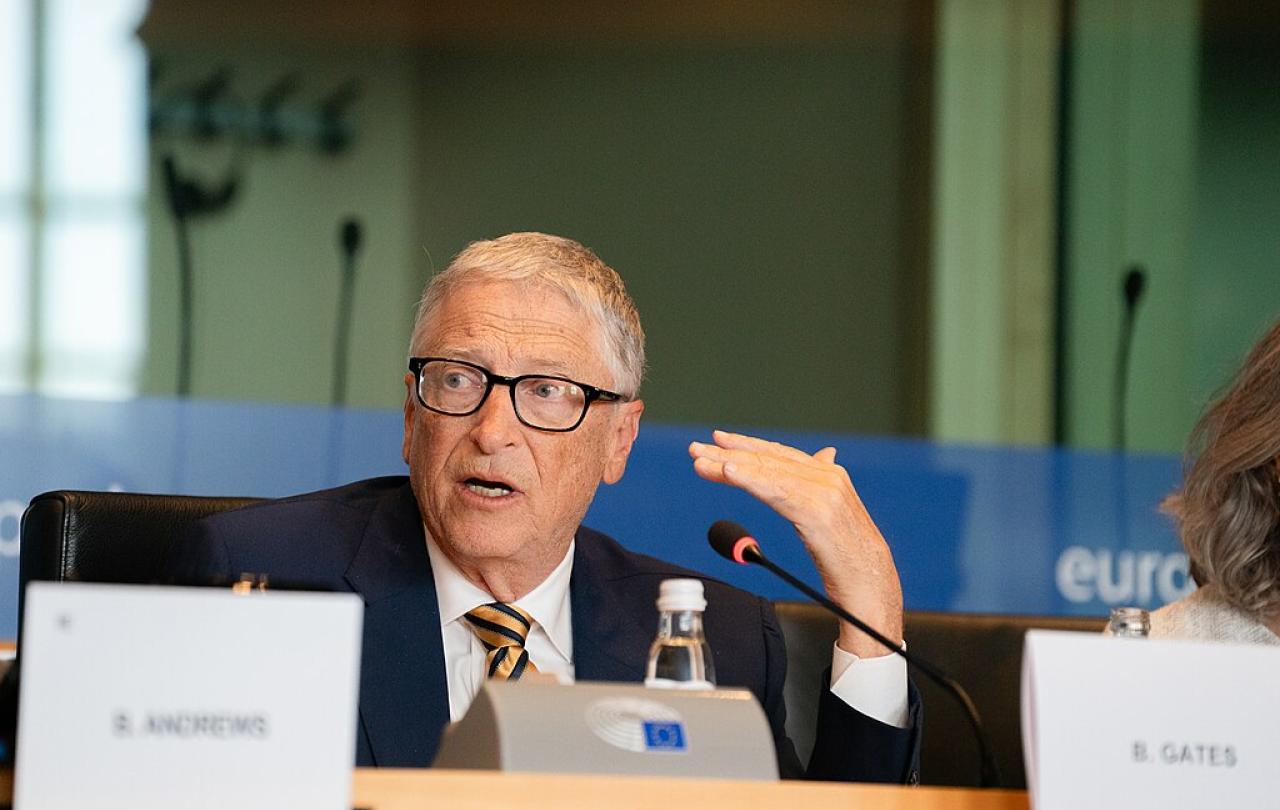
We love murder.
That seems to be the only reasonable conclusion when you look at the sales figures of Richard Osman’s record-busting murder mystery series, which opened with The Thursday Murder Club back in 2020. In UK sales alone, it sold over a million copies within the same year as its release, something no other book has ever done.
This was more than a bestselling debut novel, this was a cultural event in UK publishing. And no doubt Netflix are hoping for something equally seismic when their film adaptation of The Thursday Murder Club goes live.
The combination of light humour, a clutch of charismatic octogenarians, tea and cake, and the odd violent death or two to keep them entertained, seems to have struck the motherlode of British cultural appeal. I can only imagine the stellar cast they have assembled for the film adaptation, led by Helen Mirren and Pierce Brosnan, will take the series’ success to new heights.
As an author currently puzzling my way through my own contemporary murder mystery, I can only look on at the phenomenon in wonder and sigh for what may yet be.
But murder has always been a tricky one for me as a) an author, and b) a Christian. Do those two facts mean I have to be a “Christian author”? And if so, what kind of limits does that put around what I should be writing about? It may not sound like much of a conundrum to you, but honestly I have wrestled with this question for a long time. There is darkness in the world: how much darkness should I explore in my books? (So far, if you ever read any of my historical novels, you’ll see the answer is: quite a lot.)
Maybe I’m taking it all too seriously and murder is mere light entertainment now. Death is to be enjoyed with a nice cup of tea; evil, with slice of Victoria sponge cake.
But somehow, I don’t think so.
Recently, I was helped in my moral quandary by another crime author, Andrew Klavan. In his book, The Kingdom of Cain, published last month, Klavan explores the question of evil and specifically murder in what he terms a ‘literature of darkness’. It is a fascinating, if unusual, book. His approach is to take three murders that actually happened, and demonstrate how each has influenced a long succession of murder novels (and movies) up to the present day.
Through this exposition, we witness the changing attitudes to murder over the last century and a half and in particular how those changes seem strongly linked to the ebbing tide of Christian faith in the West.
For example, Dostoyevsky’s great novel, Crime and Punishment, was published in 1866. The double-murder, central to the plot, is carried out by a young student named Raskolnikov. He is an intellectual who is seeking to prove that the moral boundary beyond which murder lies is nothing more than a mere concoction, a social construct (or worse, a religious one) which he, being of superior intelligence, can transcend and therefore ignore. The entire novel is the story of how his conscience will not allow him to get away with this. Near the end, he confesses his crime to the young prostitute, Sonya, who responds to his confession in fearful horror:
“What have you done? What have you done to yourself?”
The second question is key.
Dostoyevsky based the plot of his novel on a real axe-murderer, a Frenchman called Pierre François Lacenaire, who went to the guillotine in 1836. Lacenaire became an international sensation when, in court, he aired many of his own pseudo-intellectual justifications for his actions – that the murders he committed were a strike against the injustice of the elites and the iniquitous power structures of the day. Rather than what they appeared to be: a grubby little double murder for the sake of a few francs. Lacenaire set the tune which many still whistle today, I’m sorry to say.
But Dostoyevsky was prophetic. He foresaw long before Nietzsche and others who would follow, that the tide of Christian faith was going out in Western civilization. And so it continued to do through the back end of the twentieth century and into this one.
Before that, the notion that murder is wrong because every human being is made in the image of God was a long-held axiom, going back arguably to the first chapters of Genesis. And in killing the image of God, any image of God, this may therefore be the closest we can come to killing God himself. Seen in that light, murder is sacrilege on an appalling scale.
But there’s the rub. That light has dimmed. The secular philosophies of the nineteenth and twentieth centuries have turned down the dimmer-switch, so that it is no longer axiomatic that humans possess an inherent sacred value. Instead, in varying guises and to varying degrees, the conclusion has been that humans are nothing but self-conscious lumps of meat. We (the state, the law) may ascribe them some value. “We are all equal,” yes - but as George Orwell anticipated, “some are more equal than others.” (Is intersectionality, for example, anything but the manifestation of that prediction?)
Maybe this explains how the horror of murder has diminished from Sonya’s heart-wringing cry, into something more akin to a crossword puzzle. Don’t get me wrong, I love a good Agatha Christie. But her murder mysteries don’t waste much time on the philosophical implications of, say, the local doctor bumping off the parish priest.
And from there, the genre of the murder mystery has split into two strains. On the one hand, we get the psycho-thriller, in which the horror of the act of murder is of less interest than the dark psychological state of mind of the killer themselves. But if that’s too dark, don’t worry. We can do light, too! And so on to cosy crime blockbusters, in which, if a murder was committed, it was because the victim had it coming – so let’s all calm down and have another slice of cake.
There is no space here in which to explore how, as a culture, our collective historical experience may have helped to steer us in this direction, as well as our changing philosophy. But there is no doubt where we have ended up. We see death cults all around us. We see legislation being passed in our Parliament which would have been unthinkable until very recently. We see social justice where before we saw crimes.
Think about how often the arch-crimes of history have been perpetrated on the ground of viewing the “other” as less than human, and certainly less than sacred. Then ask yourself, why should we see any human as more than a lump of meat? At what point does the rubber hit the road? - as surely it will.
What have we done? What have we done to ourselves?
I do wonder where all this goes. And yet, if the spiritual bellwethers are to be believed, perhaps we have reached low tide at long last – certainly it has revealed some pretty ugly creatures lurking at the bottom of the rock pool. Many, myself included, must hope that the tide of faith is truly on the turn. Let’s see. Certainly, if this proves to be the case, it seems to follow that our attitude to murder will change with that on-rushing tide. And so with it, the literature of darkness.
Beyond The Thursday Murder Club, there may yet be other great stories told of murder; they, like Crime & Punishment, will be far truer, and in a paradoxical sense, far more beautiful. After all, at the heart of the gospel, there lies a murder. If God himself can take such a dark event and turn it into light, then, at a far inferior level perhaps, as His image-bearers, so might we.
Which reminds me… back to my draft.
Support Seen & Unseen
Since Spring 2023, our readers have enjoyed over 1,500 articles. All for free.
This is made possible through the generosity of our amazing community of supporters.
If you enjoy Seen & Unseen, would you consider making a gift towards our work?
Do so by joining Behind The Seen. Alongside other benefits, you’ll receive an extra fortnightly email from me sharing my reading and reflections on the ideas that are shaping our times.
Graham Tomlin
Editor-in-Chief





